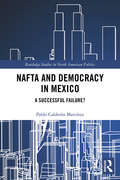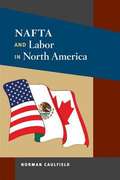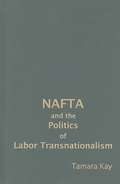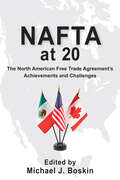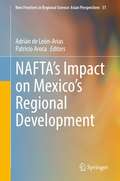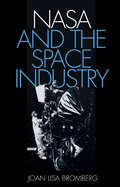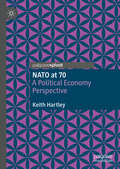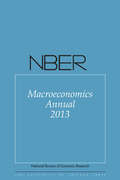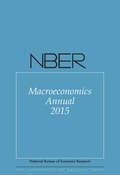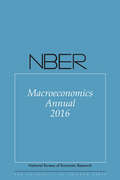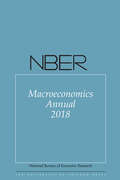- Table View
- List View
Möglichkeiten zur E-Learning-gestützten Lehre: Anwendung am Beispiel des Fachs Kostenrechnung (essentials)
by Stefan GeorgSeit der Pandemie hat das E-Learning in Schule und Studium enorm an Bedeutung gewonnen. Das Lehrkonzept für das Lehrgebiet der Kostenrechnung im Bachelorstudiengang Wirtschaftsingenieurwesen an der htw saar basiert auf selbstständigem, aber durch das Dozierendenteam dauerhaft geführtem Erarbeiten und Üben der Lehrinhalte über das E-Learning-System der htw saar. Begleitet wird der Prozess durch einen verbindlichen Arbeitsplan, selbst erstellte Lernvideos, Literaturhinweise, Übungsaufgaben, wöchentliche Feedbackveranstaltungen, Einsendeaufgaben mit individuellem Feedback sowie in den Kurs integrierten Learning Snacks. Durch das Zusammenspiel aus selbstständigem Lernen der Studierenden und regelmäßigen Feedbackveranstaltungen des Dozierendenteams verbesserten sich die Prüfungsergebnisse deutlich. Das Lehrkonzept wurde am 01.12.2021 im Rahmen des Tags der Lehre an der Hochschule für Technik und Wirtschaft des Saarlandes erfolgreich vorgestellt.
Mündliche Prüfung Bankkaufmann/-frau
by Marc Wacker Felicitas VossDieses Buch bereitet auszubildende Bankkaufleute optimal auf ihre mündliche Abschlussprüfung vor. Der Inhalt ist radikal an die Prüfung angelehnt und auf das Notwendigste reduziert. Hilfreich sind ein detaillierter Gesprächsleitfaden sowie die knappe und übersichtliche Darstellung aller Fachthemen, die für die mündliche Prüfung relevant sind. Die Prüflinge werden in die Lage versetzt, einen sicheren Gesprächsrhythmus aufzubauen. Mithilfe von Checklisten decken sie Lücken bei wichtigen Fachthemen auf und können diese anschließend effektiv schließen. Schließlich geben Autorin und Autor eine Vielzahl von Insidertipps, die zu einem optimalen prüfungstaktischen Verhalten beitragen.
Mündliche Prüfung bestanden!: Tipps, Vorbereitungs- und Verhaltensstrategien, die den Erfolg sichern
by Peter WachnerAngstlos und gut gewappnet in die mündliche Prüfung gehen! Das Buch gibt dem Prüfling Hinweise und praktische Tipps für das mündliche Prüfungsgespräch. Es enthält praxiserprobte Methoden, wie die Prüfungsvorbereitung gestaltet werden sollte, was bei einem Vortrag vor dem Prüfungsausschuss beachtet werden sollte und wie der Prüfling das Prüfungsgespräch steuern und typische Fehler vermeiden kann.
Müssen agile Transformationen scheitern?: Validiertes Lernen als Merkmal einer erfolgreichen Agilisierung
by Georg Panagos Simon StuhdeDieses Fachbuch beschäftigt sich mit dem Erfolg und vor allem Misserfolg agiler Transformationen in Unternehmen. „Agil“ ist schon lange kein Attribut mehr, welches exklusiv auf die Softwareentwicklung anzuwenden ist. Agilität ist gekommen, um zu bleiben und verändert gerade ganze Organisationen. Die Erkenntnis über ihren geschäftlichen Wert und die Notwendigkeit, sich zu verändern, ist vielerorts vorhanden. Allerdings ist Agilität auf Teamebene noch immer der verbreitetste Reifegrad. Hier stößt die Agilisierung mit dem Kopf an die Decke. Agile Einheiten verzweifeln am hierarchisch-tayloristischen Setup um sie herum. Daher braucht es einen ganzheitlichen Change, um zur agilen Organisation zu werden und damit die Fähigkeit “Business Agility” zu erwerben.Viele Transformationen stecken fest, drohen zu scheitern oder sind bereits beim nächsten Versuch. Bei Veränderungen generell, aber besonders wenn sie den Charakter eines fundamentalen Wandels haben, besteht das Risiko, dass sich Verhaltensweisen nicht nachhaltig ändern, erzielte Teilerfolge rückabgewickelt werden und die Transformation scheitert. Dieses Buch trägt Erkenntnisse von Erfahrungsträgern, Experten und Wissenschaftlern über agile Transformationen zusammen. Dabei gehen die Autoren möglichen Ursachen für das Scheitern agiler Transformationen auf den Grund und betrachten ausgereifte Herangehensweisen des Change-Managements für organisationale Transformationen. Der InhaltScheitern in IT, Wirtschaft und im Leben. Normal, Ausnahme oder sogar unumgänglich?Agile, Agilität und Transformationen. Aufräumen im Buzzword-DschungelDie agile Organisation als Olymp der Organisationsentwicklung? Warum Unternehmen von der Raupe zum Schmetterling werden wollenTransformation nach Plan? Gibt es „best practices“, um sich als Unternehmen zu agilisieren?Nachgefragt: Welche Erfahrungen haben agile Praktiker mit dem Scheitern agiler Transformationen gemacht?Lange Hebel für kurze Transformationen: Über agile Führungskräfteteams und „inspect and adapt“ für Change-Management
N12 Technologies: Building an Organization and Building a Business
by David A. Garvin Aldo SesiaN12 Technologies was a startup founded in 2010 that employed nanotechnology to manufacture a patented material to improve the performance of carbon fiber composites, which were used in a wide variety of products, ranging from bicycles to automobiles to aircraft parts. By 2016, the company had grown to 27 employees and was able to produce its product in small volumes. While much had been achieved, the company's success hinged on its leadership's ability to scale both the organization and production capabilities exponentially. The case describes the company's evolution from a newly created startup to a young "loosely structured" company as well as the challenges ahead.
NAACP
by James E. Austin Paul Barese Elaine V. Backman Stephanie WoernerIn February 1995, the National Association for the Advancement of Colored People (NAACP), the largest civil rights organization in the United States, was in the midst of a crisis. The executive director had been fired due to financial improprieties amid charges of sexual harassment. Immediately thereafter the board chairman came under fire as well. In a very close vote, Myrlie Evers-Williams, a long-standing board member, was elected the new board chair. She found herself leading an organization with severely diminished credibility and support, precarious finances, and a fractured board of directors. The case raises issues regarding board oversight, governance structure, and crisis leadership in a nonprofit setting.
NAFTA and Democracy in Mexico: A Successful Failure? (Routledge Studies in North American Politics)
by Pablo Calderón MartínezAfter describing NAFTA as ‘the worst trade deal maybe ever signed anywhere’, Donald Trump’s election seemed to represent the final nail in the coffin for North American economic integration. Following a decade of stagnation, however, Trump’s victory presents a timely opportunity to reconsider North American integration and evaluate NAFTA’s democratic track record in Mexico. In this book, Pablo Calderón Martínez presents a detailed analysis of NAFTA’s influence as a political tool for democracy in Mexico. Extending beyond a mere economic or social exploration of the consequences of NAFTA, Calderón Martínez uses a three-tiered analysis based on causality mechanisms to explain how the interactions between internationalisation and democratisation unfolded in Mexico. Calderón Martínez’s analysis demonstrates that Mexico’s internationalisation project under the framework of NAFTA gave shape to, if not made, Mexico’s democratisation process. An original and timely resource for scholars and students interested in understanding how – in cases like Mexico where transitions to democracy are characterised by a finely poised balance of power – small influences from abroad can make significant long-lasting differences domestically.
NAFTA and Labor in North America (The Working Class in American History)
by Norman CaulfieldAs companies increasingly look to the global market for capital, cheaper commodities and labor, and lower production costs, the impact on Mexican and American workers and labor unions is significant. National boundaries and the laws of governments that regulate social relations between laborers and management are less relevant in the era of globalization, rendering ineffective the traditional union strategies of pressuring the state for reform. Focusing especially on the effects of the North American Free Trade Agreement and the North American Agreement on Labor Cooperation (the first international labor agreement linked to an international trade agreement), Norman Caulfield notes the waning political influence of trade unions and their disunity and divergence on crucial issues such as labor migration and workers' rights. Comparing the labor movement's fortunes in the 1970s with its current weakened condition, Caulfield notes the parallel decline in the United States' hegemonic influence in an increasingly globalized economy. As a result, organized labor has been transformed from organizations that once pressured management and the state for worker concessions to organizations that now request that workers concede wages, pensions, and health benefits to remain competitive in the global marketplace.
NAFTA and the Mexican Manufacturing Sector: Structural Change and Competitiveness
by Raúl Vázquez-LópezThis volume discusses the development of the Mexican manufacturing sector during the NAFTA era. This book pursues several objectives simultaneously. Firstly, it gives continuity to and revitalizes the structuralist economic perspective and debate proposed by Latin American development theory. Secondly, it analyzes the trend of structural heterogeneity in Mexico from 1994-2008 using the manufacturing sector as a case study. Lastly, it uses methodologies established by the Economic Commission for Latin America and the Caribbean (ECLAC) to provide an in-depth statistical evaluation of the effects of economic liberalization on structural change, labor productivity, production concentration, and dynamic competitiveness in the main industries of the sector: food, beverages, and tobacco; textiles and apparel; chemistry; electromechanics.Providing historical context for the evolution of Mexico’s economy after trade liberalization, this volume will be of interest to students, scholars, and researchers of industrial economics, economic development, Latin-American studies, developing studies, international economics, international relations, political science, and economic geography.
NAFTA and the Politics of Labor Transnationalism
by Tamara KayWhen NAFTA went into effect in 1994, many feared it would intensify animosity among North American unions, lead to the scapegoating of Mexican workers and immigrants, and eclipse any possibility for cross-border labor cooperation. But far from polarizing workers, NAFTA unexpectedly helped stimulate labor transnationalism among key North American unions and erode union policies and discourses rooted in racism. The emergence of labor transnationalism in North America presents compelling political and sociological puzzles: How did NAFTA, the concrete manifestation of globalization processes in North America, help deepen labor solidarity on the continent? In addition to making the provocative argument that global governance institutions can play a pivotal role in the development of transnational social movements, this book suggests that globalization need not undermine labor movements: collectively, unions can help shape how the rules governing the global economy are made.
NAFTA at 20: The North American Free Trade Agreement's Achievements and Challenges
by Edited by Michael J. BoskinThe North American Free Trade Agreement (NAFTA) was bold and controversial from the start. When first conceived, it was far from obvious that it would be possible given the circumstances of the times. Drawing from a December 2013 Hoover Institution conference on "NAFTA at 20," this book brings together distinguished academics who have studied the effects of NAFTA with high-level policy makers to present a comprehensive view of the North American Free Trade Agreement. It looks at the conception, creation, outcomes so far, and the future of NAFTA from the perspective of economists, historians, and the aforementioned policy makers in the words of those who actually participated in the negotiations and research. In the context of the fundamental economic and political transformation of North America, they discuss the trade, real wage, and welfare gains that NAFTA has produced for the United States, Mexico, and Canada, along with a review of the major energy markets within and among the three countries. They include lessons from NAFTA for the future, both for NAFTA itself and for other trade agreements, and stress the importance of political leadership and providing information on the benefits of trade liberalization to voters and potentially ill-informed politicians who hear most loudly from the opponents.
NAFTA’s Impact on Mexico’s Regional Development (New Frontiers in Regional Science: Asian Perspectives #51)
by Patricio Aroca Adrián de León-AriasIn this book, the dynamics of continuity and change in the regional economic development of Mexico and the US border states are analyzed. These studies cover the last 25 years, after the first trade agreement, between a developed and a developing country, tooks place, and where international trade and investment have been combined with a set of relevant local factors such as regional innovation, industrialization patterns, multinational corporations’ modes of operation, public investment, and national content of exports. The book offers researchers a precise identification of stylized facts that characterize the pattern of regional development in Mexico and the US Southwest as well as state-of-the-art applications contrasting hypotheses from new economic geography, endogenous and neo-Schumpeterian economic growth models, and new international trade. To graduate and advanced undergraduate students in the fields of spatial geographic economics, this book offers an excellent source for its updated review of current topics on regional development in Mexico. To policy makers, the book helps to identify policy areas to reinforce the dynamics of regional development. Whereas other books have looked at the several impacts of NAFTA on national economies, productive sectors, and societies, this book analyzes the trade agreement’s impact with a long-term view across the diversity of developments of Mexico´s regions. As well, the analysis is carried out with the perspective of prospective reforms of a renovated trade agreement between the United States and the new Mexican federal administration . The collaborators in this book are researchers who are experts at the international and national levels in the field of regional economic development. During the last 25 years they have conducted their analyses in different regions of Mexico and the United States as university researchers, advisors to state and federal governments, and as practitioners.
NASA and the Space Industry (New Series in NASA History)
by Joan Lisa BrombergA timely exploration of the relationships between NASA and the private sector: “An interesting read.” —SpaceflightFew federal agencies have more extensive ties to the private sector than NASA. NASA’s relationships with its many aerospace industry suppliers of rocket engines, computers, electronics, gauges, valves, O-rings, and other materials have often been described as “partnerships.” These have produced a few memorable catastrophes, but mostly technical achievements of the highest order. Until now, no one has written extensively about them.In NASA and the Space Industry, Joan Lisa Bromberg explores how NASA’s relationship with the private sector developed and how it works. She outlines the various kinds of expertise public and private sectors brought to the tasks NASA took on, describing how this division of labor changed over time. She explains why NASA sometimes encouraged and sometimes thwarted the privatization of space projects and describes the agency’s role in the rise of such new space industries as launch vehicles and communications satellites.
NASB, Charles F. Stanley Life Principles Bible, 2nd Edition, Ebook: Holy Bible, New American Standard Bible
by Thomas NelsonThe Charles F. Stanley Life Principles Bible, with over a million sold to date, is designed to lead believers into a life-changing relationship with Jesus Christ, and to help them experience the Good News about God&’s mighty kindness and love. The updated second edition is the best way to experience this bestselling classic—with a completely new design featuring our easy-to-read Comfort Print typeface, 100 specially designed maps and charts that bring biblical places and themes to life, and over 43,000 cross references to enrich your study of the Word.Features include:30 Life Principles articles highlight Dr. Stanley&’s essentials for Christian livingMore than 2,500 Life Lessons verse notes bring to life the practical and personal nature of God&’s Word to usA listing of over 300 verses revealing God&’s promises throughout the Bible that encourage, strengthen, and bring hopeAnswers to Life's Questions and What the Bible Says About articles bring scriptural insight to bear on topics of special importance to every believerTopical indexes give immediate access to hundreds of life-giving principles and promises throughout the Old and New TestamentsBook introductions provide an overview of the themes and literary structure of each book and alert readers to important principles they&’ll encounter as they readNew for the 2nd Edition, 100 maps and charts that help important biblical places and themes come alive and over 43,000 cross references to enrich your study
NATO at 70: A Political Economy Perspective
by Keith HartleyNATO is facing a unique crisis questioning its existence and future. This book provides a detailed in-depth economic and critical analysis of the issues. It considers whether NATO has a future and what it might look like 70 years ahead. NATO is undergoing a process of dramatic change, reorganising its functions, funding and strategic responsibilities to address growing regional and global threats. This book not only explores the contentiousness of economic and financial burden-sharing and the associated political and diplomatic stresses involved in the pursuit of common strategic objectives, but contributes to a further debate concerning the expanded scope and roles of the Alliance in the 21st century. This book combines NATO’s political controversies, complexities and conflicts with a treatment of the underlying theoretical economic frameworks. This book is essential reading for students in military staff colleges, university International Relations and Strategic Affairs Departments, but also to those working in government defence establishments, independent think tanks and political and economic institutions, generally.
NBCUniversal
by Anita ElberseIn September 2014, Stephen Burke, chief executive officer at lmedia and entertainment company NBCUniversal, has to decide between possible priorities for the company's 'Project Symphony,' guaranteeing the winners a high level of visibility and support across the media conglomerate's broadcast and cable television, film, and theme park divisions. Past "Gold" priorities for Symphony, an initiative introduced shortly after Comcast made steps to acquire NBCUniversal in 2010, saw subsequent success in the marketplace. Symphony is so powerful, in fact, that competing conglomerates are keen to buy some of NBCUniversal's cross-promotional strength, as Disney did with its megahit Frozen in 2014. For 2015, the choice is between five films-Fast & Furious 7, Fifty Shades of Grey, Jurassic World, Minions, and Pitch Perfect 2-as well as two choices in television. Which are most deserving of Gold status?
NBCUniversal
by Anita ElberseIn September 2014, Stephen Burke, chief executive officer at lmedia and entertainment company NBCUniversal, has to decide between possible priorities for the company's 'Project Symphony,' guaranteeing the winners a high level of visibility and support across the media conglomerate's broadcast and cable television, film, and theme park divisions. Past "Gold" priorities for Symphony, an initiative introduced shortly after Comcast made steps to acquire NBCUniversal in 2010, saw subsequent success in the marketplace. Symphony is so powerful, in fact, that competing conglomerates are keen to buy some of NBCUniversal's cross-promotional strength, as Disney did with its megahit Frozen in 2014. For 2015, the choice is between five films-Fast & Furious 7, Fifty Shades of Grey, Jurassic World, Minions, and Pitch Perfect 2-as well as two choices in television. Which are most deserving of Gold status?
NBER Macroeconomics Annual 2013: Volume 28
by Michael Woodford Jonathan ParkerThe twenty-eighth edition of the NBER Macroeconomics Annual continues its tradition of featuring theoretical and empirical research on central issues in contemporary macroeconomics. As in previous years, this volume not only addresses recent developments in macroeconomics, but also takes up important policy-relevant questions and opens new debates that will continue for years to come. The first two papers in this year's issue tackle fiscal and monetary policy, asking how interest rates and inflation can remain low despite fiscal policy behavior that appears inconsistent with a monetary policy regime focused only on inflation and output and not on fiscal balances as recently observed in the U.S. The third examines the implications of reference-dependent preferences and moral hazard in employment fluctuations in the labor market. The fourth paper addresses money and inflation, analyzing the long run inflation rate, the coexistence of money with pledgeable and money-like assets, and why inflation did not increase in response to business-cycle fluctuations in productivity. And the fifth looks at the stock market and how it relates to the real economy. The final chapter discusses the large and public shift towards more expansionary monetary policy that has recently occurred in Japan.
NBER Macroeconomics Annual 2013: Volume 28 (National Bureau of Economic Research Macroeconomics Annual #28)
by The University of Chicago PressThe twenty-eighth edition of the NBER Macroeconomics Annual continues its tradition of featuring theoretical and empirical research on central issues in contemporary macroeconomics. As in previous years, this volume not only addresses recent developments in macroeconomics, but also takes up important policy-relevant questions and opens new debates that will continue for years to come. The first two papers in this year’s issue tackle fiscal and monetary policy, asking how interest rates and inflation can remain low despite fiscal policy behavior that appears inconsistent with a monetary policy regime focused only on inflation and output and not on fiscal balances as recently observed in the U.S. The third examines the implications of reference-dependent preferences and moral hazard in employment fluctuations in the labor market. The fourth paper addresses money and inflation, analyzing the long run inflation rate, the coexistence of money with pledgeable and money-like assets, and why inflation did not increase in response to business-cycle fluctuations in productivity. And the fifth looks at the stock market and how it relates to the real economy. The final chapter discusses the large and public shift towards more expansionary monetary policy that has recently occurred in Japan.
NBER Macroeconomics Annual 2014
by Michael Woodford Jonathan ParkerThe twenty-ninth edition of the NBER Macroeconomics Annual continues its tradition of featuring theoretical and empirical research on central issues in contemporary macroeconomics. Two papers in this year's issue deal with recent economic performance: one analyzes the evolution of aggregate productivity before, during, and after the Great Recession, and the other characterizes the factors that have contributed to slow economic growth following the Great Recession. Another pair of papers tackles the role of information in business cycles. Other contributions address how assumptions about sluggish nominal price adjustment affect the consequences of different monetary policy rules and the role of business cycles in the long-run decline in the share of employment in middle-wage jobs. The final chapter discusses the advantages and disadvantages of the elimination of physical currency.
NBER Macroeconomics Annual 2014: Volume 29 (National Bureau of Economic Research Macroeconomics Annual #29)
by The University of Chicago PressThe twenty-ninth edition of the NBER Macroeconomics Annual continues its tradition of featuring theoretical and empirical research on central issues in contemporary macroeconomics. Two papers in this year’s issue deal with recent economic performance: one analyzes the evolution of aggregate productivity before, during, and after the Great Recession, and the other characterizes the factors that have contributed to slow economic growth following the Great Recession. Another pair of papers tackles the role of information in business cycles. Other contributions address how assumptions about sluggish nominal price adjustment affect the consequences of different monetary policy rules and the role of business cycles in the long-run decline in the share of employment in middle-wage jobs. The final chapter discusses the advantages and disadvantages of the elimination of physical currency.
NBER Macroeconomics Annual 2015: Volume 30 (National Bureau of Economic Research Macroeconomics Annual #30)
by The University of Chicago PressThis year, the NBER Macroeconomics Annual celebrates its thirtieth volume. The first two papers examine China’s macroeconomic development. “Trends and Cycles in China's Macroeconomy” by Chun Chang, Kaiji Chen, Daniel F. Waggoner, and Tao Zha outlines the key characteristics of growth and business cycles in China. “Demystifying the Chinese Housing Boom” by Hanming Fang, Quanlin Gu, Wei Xiong, and Li-An Zhou constructs a new house price index, showing that Chinese house prices have grown by ten percent per year over the past decade. The third paper, “External and Public Debt Crises” by Cristina Arellano, Andrew Atkeson, and Mark Wright, asks why there appear to be large differences across countries and subnational jurisdictions in the effect of rising public debts on economic outcomes. The fourth, “Networks and the Macroeconomy: An Empirical Exploration” by Daron Acemoglu, Ufuk Akcigit, and William Kerr, explains how the network structure of the US economy propagates the effect of gross output productivity shocks across upstream and downstream sectors. The fifth and sixth papers investigate the usefulness of surveys of household’s beliefs for understanding economic phenomena. “Expectations and Investment,” by Nicola Gennaioli, Yueran Ma, and Andrei Shleifer, demonstrates that a chief financial officer's expectations of a firm's future earnings growth is related to both the planned and actual future investment of that firm. “Declining Desire to Work and Downward Trends in Unemployment and Participation” by Regis Barnichon and Andrew Figura shows that an increasing number of prime-age Americans who are not in the labor force report no desire to work and that this decline accelerated during the second half of the 1990s.
NBER Macroeconomics Annual 2016 (National Bureau of Economic Research Macroeconomics Annual)
by The University of Chicago PressThe thirty-first edition of the NBER Macroeconomics Annual features theoretical and empirical research on central issues in contemporary macroeconomics. The first two papers are rigorous and data-driven analyses of the European financial crisis. The third paper introduces a new set of facts about economic growth and financial ratios as well as a new macrofinancial database for the study of historical financial booms and busts. The fourth paper studies the historical effects of Federal Reserve efforts to provide guidance about the future path of the funds rate. The fifth paper explores the distinctions between models of price setting and associated nominal frictions using data on price setting behavior. The sixth paper considers the possibility that the economy displays nonlinear dynamics that lead to cycles rather than long-term convergence to a steady state. The volume also includes a short paper on the decline in the rate of global economic growth.
NBER Macroeconomics Annual 2017: Volume 32 (National Bureau of Economic Research Macroeconomics Annual #32)
by The University of Chicago PressVolume 32 of the NBER Macroeconomics Annual features six theoretical and empirical studies of important issues in contemporary macroeconomics, and a keynote address by former IMF chief economist Olivier Blanchard. In one study, SeHyoun Ahn, Greg Kaplan, Benjamin Moll, Thomas Winberry, and Christian Wolf examine the dynamics of consumption expenditures in non-representative-agent macroeconomic models. In another, John Cochrane asks which macro models most naturally explain the post-financial-crisis macroeconomic environment, which is characterized by the co-existence of low and nonvolatile inflation rates, near-zero short-term interest rates, and an explosion in monetary aggregates. Manuel Adelino, Antoinette Schoar, and Felipe Severino examine the causes of the lending boom that precipitated the recent U.S. financial crisis and Great Recession. Steven Durlauf and Ananth Seshadri investigate whether increases in income inequality cause lower levels of economic mobility and opportunity. Charles Manski explores the formation of expectations, considering the efficacy of directly measuring beliefs through surveys as an alternative to making the assumption of rational expectations. In the final research paper, Efraim Benmelech and Nittai Bergman analyze the sharp declines in debt issuance and the evaporation of market liquidity that coincide with most financial crises. Blanchard’s keynote address discusses which distortions are central to understanding short-run macroeconomic fluctuations.
NBER Macroeconomics Annual 2018: Volume 33 (National Bureau of Economic Research Macroeconomics Annual #33)
by The University of Chicago PressThis volume contains six studies on current topics in macroeconomics. The first shows that while assuming rational expectations is unrealistic, a finite-horizon forward planning model can yield results similar to those of a rational expectations equilibrium. The second explores the aggregate risk of the U.S. financial sector, and in particular whether it is safer now than before the 2008 financial crisis. The third analyzes “factorless income,” output that is not measured as capital or labor income. Next, a study argues that the financial crisis increased the perceived risk of a very bad economic and financial outcome, and explores the propagation of large, rare shocks. The next paper documents the substantial recent changes in the manufacturing sector and the decline in employment among prime-aged Americans since 2000. The last paper analyzes the dynamic macroeconomic effects of border adjustment taxes.





